Back in the Observatory!
Posted: 4 August 2022
Sunday evening, 31 July 2022, about an hour after I posted my previous report, a strong Monsoon thunderstorm came through Oracle with lots of lightning, wind, and brief heavy rain (0.38").
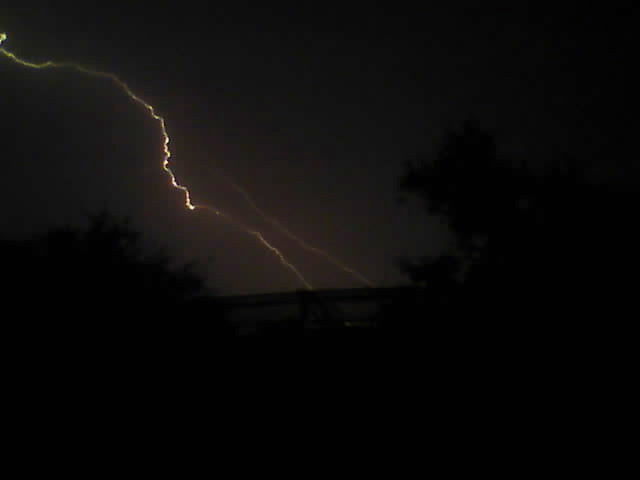

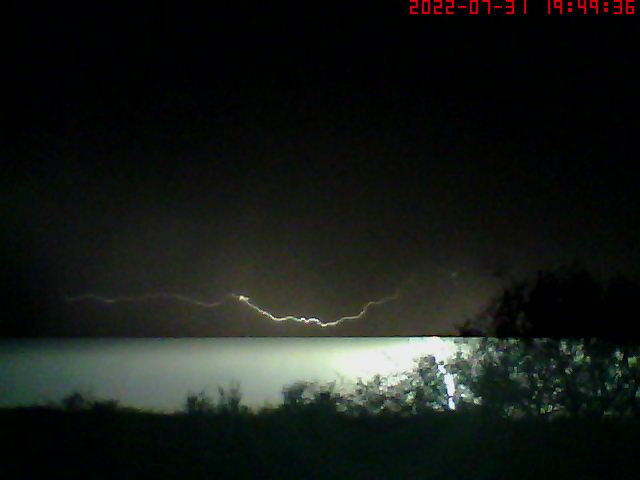

Monday, 1 August, was mostly clear during the morning but clouds appeared mid-afternoon. Late Monday afternoon a strong thunderstorm was just west of Oracle.
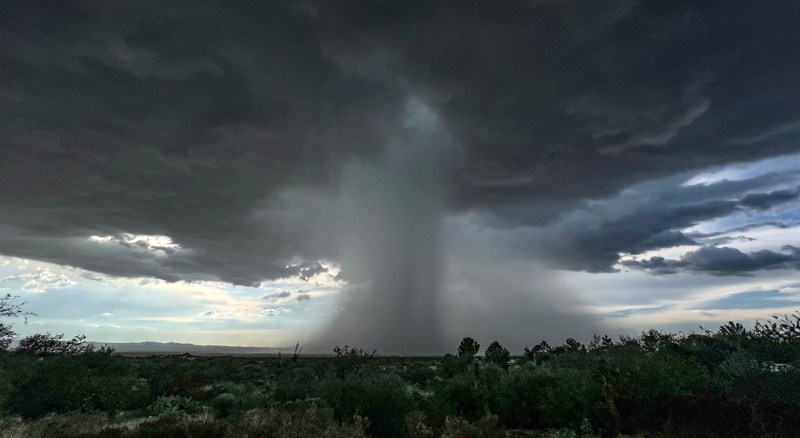
The storm only dropped 0.02" rain at Cassiopeia Observatory, but a lightning strike started a small brush fire near the Oracle Fire Department and caused a brief power glitch. Tuesday morning, 2 August, was clear until mid-morning when typical Monsoon clouds began appearing.
Wednesday, 3 August, was cloudy until late afternoon when the sky mostly cleared. This would be my first night in the observatory since 7 July due to cloudy nights. However, overnight thunderstorms were in the forecast.
|
Open: Wednesday, 3 August 2022, 1809 MST Temperature: 101°F |
Session: 1783 Conditions: Mostly clear |
Equipment:
12" f/8 LX600 w/StarLock
2" 24mm UWA eyepiece
2" 30mm eyepiece
1.25" 15mm eyepiece
Camera:
iPhone 13 Pro Max
1814 MST: Dome Cover OFF.
SYNCed observatory clock to WWV time signals.
1819 MST: LX600 ON, StarLock OFF, High Precision OFF.
Viewed the Moon, 102X.
Relaxed on the observatory patio bench for a few minutes.
1828 MST: Clouds in the northeast were increasing, as seen in this iPhone photo.
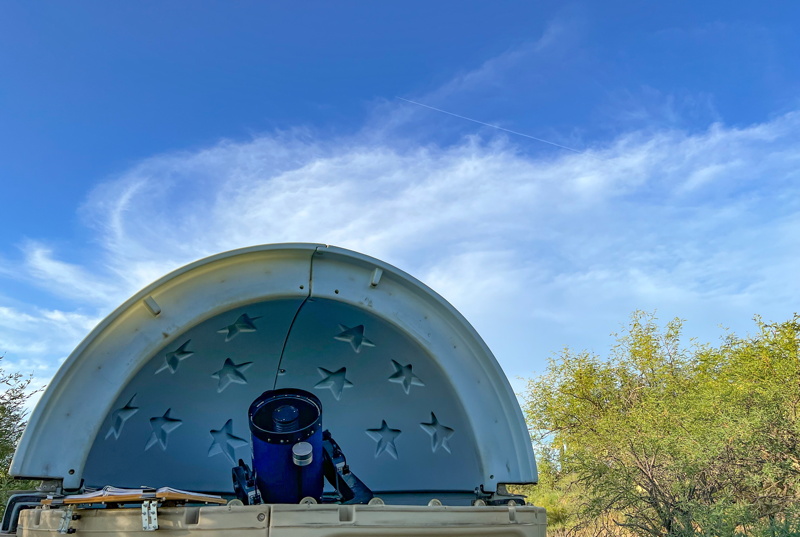
1845 MST: The northeast quadrant of the sky was now cloudy.
1859 MST: A large storm system was visible over Mexico, as seen in this iPhone photo. The crescent Moon is at the top of the photo.
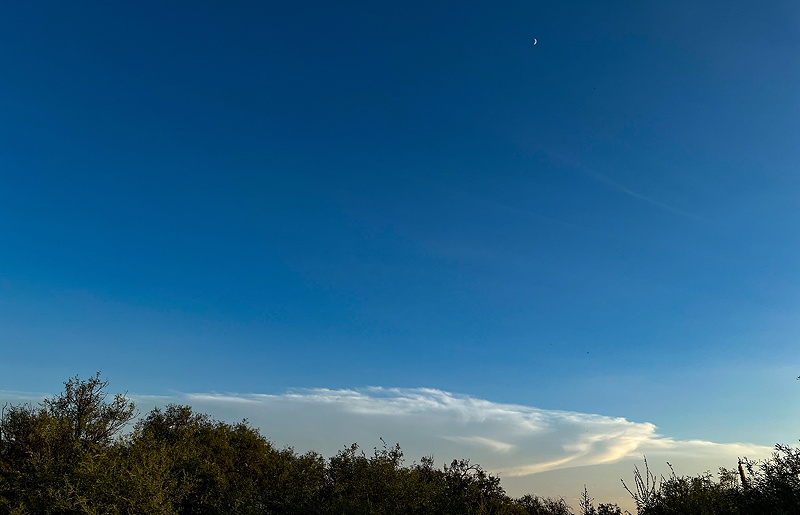
1911 MST: The northeast half of the sky was now cloud covered. I went inside the observatory to begin some lunar observing.
Viewed the Moon, 81X.
1923 MST: Sunset.
Attached my LiDAR cover to the iPhone 13 Pro Max and mounted the iPhone on the 2" 30mm eyepiece using the Levenhuk adapter. Took this afocal 81X image of the Moon using the iOS app NightCap Camera (ISO 34, 1/710sec, 1X lens).
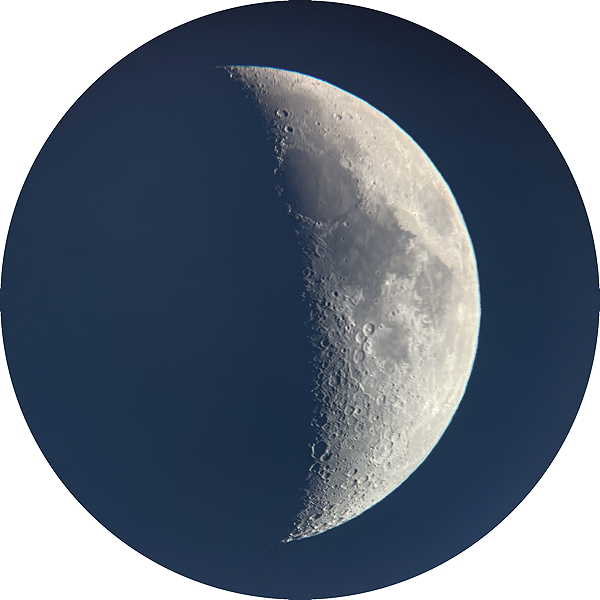
1925 MST: iPhone photo looking northwest shortly after sunset.
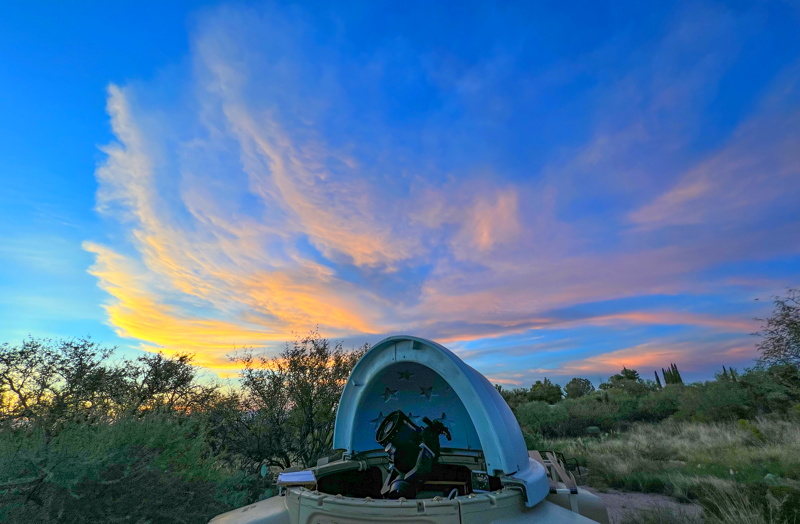
Mounted the iPhone on a 1.25" 15mm eyepiece and took these NightCap Camera afocal 163X images of the northern and southern regions of the Moon.
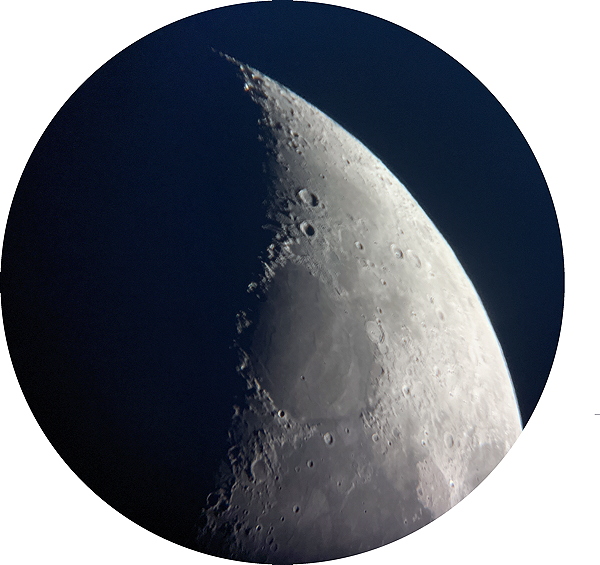
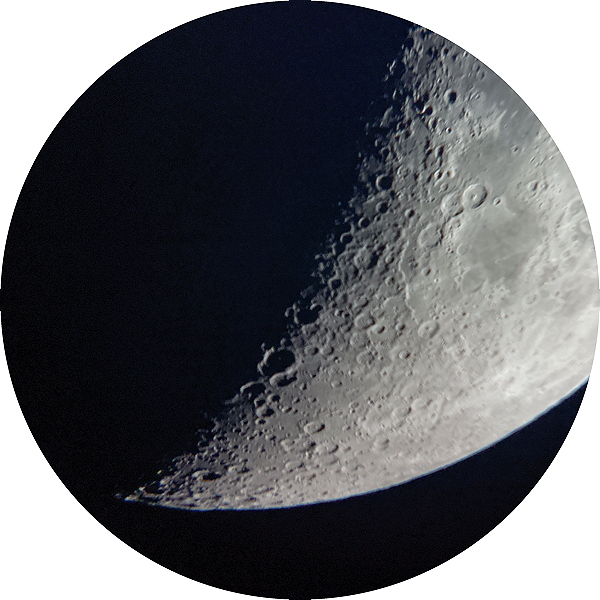
Then did some lunar observing, 163X and 102X.
1940 MST: LX600 OFF.
2000 MST: Dome Cover ON.
As I was putting the Cover on the dome, I saw a late season Kissing Bug on the observatory dome. Normally, the Kissing Bug season here is mid-to-late May to mid-June. This was the latest I've seen a Kissing Bug here.
|
Close: Wednesday, 3 August 2022, 2004 MST Temperature: 82°F |
Session Length: 1h 55m Conditions: Mostly cloudy |
Monday, 1 August 2022, update on the wildfire recovery at Kitt Peak National Observatory.
Astronomy Technology Today magazine published my review of the Explore Scientific 17mm & 12mm 92° eyepieces in their Volume 16 Issue 6.
Tuesday, 2 August, the International Dark-Sky Association posted their Light is Energy: Estimating the Impact of Light Pollution on Climate Change.
Comments are welcome using Email. Twitter users can use the button below to tweet this report to their followers. Thanks.
Cassiopeia Observatory Home Page
Copyright ©2022 Michael L. Weasner / mweasner@mac.com. Email Etiquette.
URL = http://www.weasner.com/co/Reports/2022/08/04/index.html
